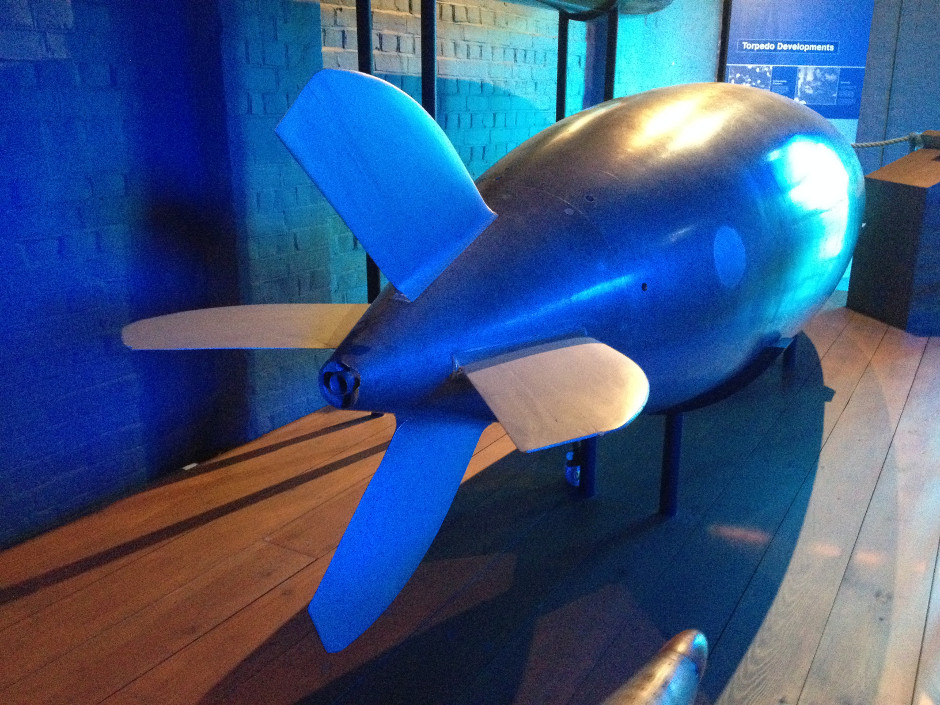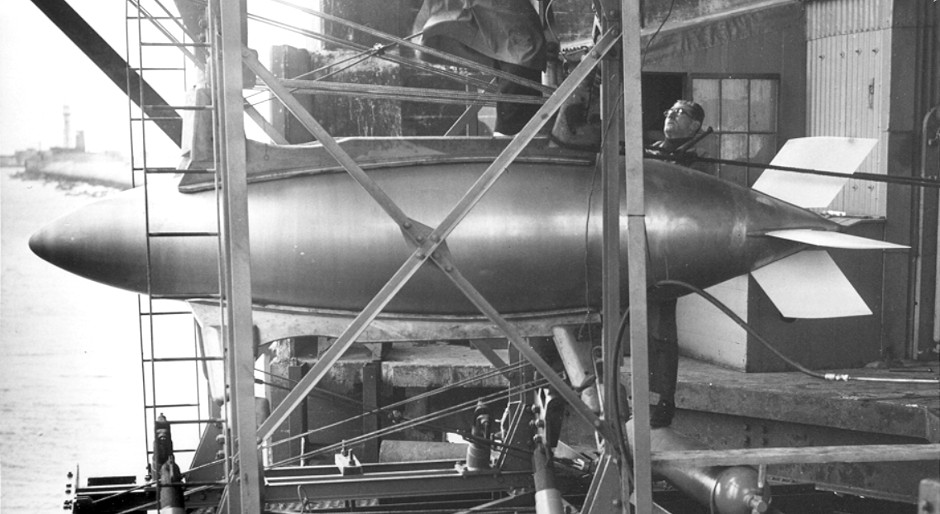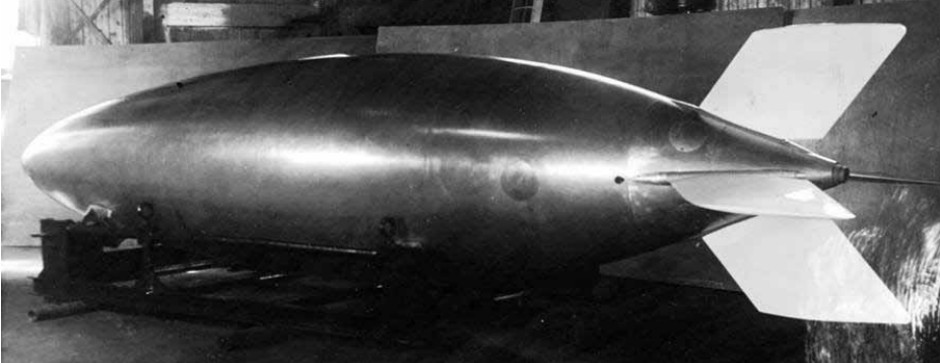 British 'Heyday' rocket torpedo
British 'Heyday' rocket torpedo
 British scientist, engineer and inventor Sir Barnes Neville Wallis CBE is best remembered for inventing the bouncing bomb which was used by the Royal Air Force in the Dambusters raid (Operation Chastise). He worked on a wide range of projects however, including hydrodynamics. Among his lesser known, yet particularly interesting, experiments was the Heyday rocket torpedo.
British scientist, engineer and inventor Sir Barnes Neville Wallis CBE is best remembered for inventing the bouncing bomb which was used by the Royal Air Force in the Dambusters raid (Operation Chastise). He worked on a wide range of projects however, including hydrodynamics. Among his lesser known, yet particularly interesting, experiments was the Heyday rocket torpedo.

The vehicle was developed to test extremely low-drag 'laminar flow' hull forms for torpedoes. It seems that Wallis himself had only a passing interest in torpedoes; he was intending the project to test theories applicable for high performance aircraft. Either way the Heyday was in essence an experimental hull form for high-performance torpedoes. It was tested in 1951.

*Today the Heyday body is on display at the Explosion Museum of Naval Firepower at Gosport in UK.
Get The essential guide to World Submarines
This Covert Shores Recognition Guide Covers over 80 classes of submarines including all types currently in service with World Navies.Check it out on Amazon
Instead of conventional propellers (screws) it used a High Test Peroxide (HTP) rocket. This involved forcing the HTP through a fine silver mesh using compressed air. It catalytically decomposed into high-pressure air, oxygen and steam, shooting out of the torpedo. The HTP motor was developed by German scientists working for Vickers Armstrong at Welwyn Garden City, north of London. HTP had been pinoeered in Nazi Germany as an air-independent propulsion (AIP) for submarines. Examples of submarines with this fuel included HMS Meteorite, HMS Explorer and HMS Excaliber. And the USS X1 and German Dolfin.

 USS X-1 X-Craft
USS X-1 X-Craft

 Project 617 'WHALE' AIP Submarine
Project 617 'WHALE' AIP Submarine

 WW2 German Delfin midget submarine with AIP
WW2 German Delfin midget submarine with AIP

*Heyday during testing. Note that the fins are a different shape to the photo above. Photo from THE DEVELOPMENT OF ROCKET-PROPELLED TORPEDOES by Geoff Kirby (twitter).
The ultimate book of Special Forces subs Covert Shores 2nd Edition is the ONLY world history of naval Special Forces, their missions and their specialist vehicles. SEALs, SBS, COMSUBIN, Sh-13, Spetsnaz, Kampfschwimmers, Commando Hubert, 4RR and many more.
Check it out on Amazon
The tests were modestly successful but the resulting torpedo would only be marginally faster than a regular one. And the benefits of laminar flow depended on how clean the surface of the torpedo was. The project never led to a production weapon.

*Photo from Barnes Wallis Foundation
Related articles (Full index of popular Covert Shores articles)

 British SDV developmemts in 1960s (Dick Tuson)
British SDV developmemts in 1960s (Dick Tuson)
 Sleeping Beauty (Motorised Submersible Canoe) of WW2
Sleeping Beauty (Motorised Submersible Canoe) of WW2

 Mignatta first human torpedo
Mignatta first human torpedo

 Stidd Diver Propulsion Device (DPD)
Stidd Diver Propulsion Device (DPD)


 Dry Combat Submersible (DCS)
Dry Combat Submersible (DCS)

 SDV Mk.9 SEAL Delivery Vehicle. w/Cutaway
SDV Mk.9 SEAL Delivery Vehicle. w/Cutaway

 DGSE's SDVs
DGSE's SDVs

 Cos.Mo.S CE2F chariot
Cos.Mo.S CE2F chariot

 SWUV (/ PSM3G) advanced SDV
SWUV (/ PSM3G) advanced SDV

 Naval Spetsnaz in Hybrid Warfare (Russian SDVs and DPVs)
Naval Spetsnaz in Hybrid Warfare (Russian SDVs and DPVs)

 SubSEAL advanced SDV
SubSEAL advanced SDV

 SubCat SDV
SubCat SDV


 Marex Type-A (A2, A4, A5, Comex Total-Sub-01) SDVs
Marex Type-A (A2, A4, A5, Comex Total-Sub-01) SDVs

 Polish Blotniak SDV
Polish Blotniak SDV


 EMT FWS-1 to -5 Barracuda SDVs
EMT FWS-1 to -5 Barracuda SDVs


